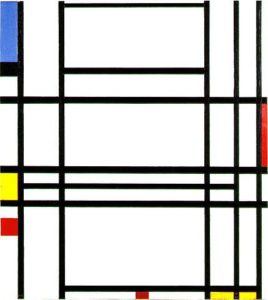
Abstract art is an art form that has no exact definition; however, there are a few clear qualities that allow this type of art to be considered abstract. This kind of art does not illustrate anything that is found in the natural world. Abstract art shows that existence is arbitrary. Many famous abstract artists used their abilities to show that the formal elements are just as important as realistic elements. Abstract art has been around longer than most people realize. Before covering the topic of this article, there are a few things of importance one should know.
History
Most people consider the beginning of abstract art in the late 19th century to the early 20th century; however, some prehistorical art forms show similar characteristics of abstract art. For example: rock engravings in the Blombos Cave in South Africa, Neanderthal engravings in Gorham’s Cave in Gibraltar, club-shaped claviforms in Altamira Cave in Spain, etc.
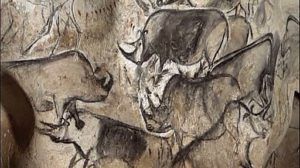
Rhino drawings from the Chauvet Cave, about 30,000 to 32,000 years ago
Abstract artists began to move away from the conventional, fundamental practices of Classical Realism, that was taught in schools in Europe, during the late 1890s and early 1900s. This began with ”art nouveau,” which was where the artists would turn everyday objects into art so that they could bring beauty to everyone.

”Art nouveau” paved the way for another major art movement, known as impressionism. Impressionism normally was non-naturalistic but still was clearly borrowed from actuality. Then it was followed by German Expressionism, Italian Futurism, Cubism, Russian Suprematism, De Stijl, NeoPlasticism, Elementarism, and Surrealism/Organic. These movements types all came out before 1945. Then in 1945, most of the abstract art world moved to New York and the New York School of Abstract Expressionism. Abstract expressionism was the first movement started in the United States; Europe’s version was Art Informel. Then Op Art emerged but the movement ended around 1970s. The postmodern movement began in the 1960s and still continues until today.
Main Categories
There are six main categories, with many sub-categories that each type of abstract art falls under.
Curvilinear Abstract Art – This is normally associated with Celtic art and their motifs. However, the Celtics were not the only ones with such motifs, Islamic art is also associated with them. Before the appearance of the Celtics, the Neolithic Passage Tomb had motifs, (which are knots, interlaced patterns, spirals, etc.), covering it. During the 20th century Celtic Revival Movement, book-covers, textile, wallpaper, chintz were covered in Celtic patterns. Two of the famous curvilinear abstract artists are William Morris and Arthur Mackmurdo.
Color Related or Light Related Abstract Art – The artists would use color or light to separate their art from reality. During the 1950s in France, lyrical abstract art emerged. Lyrical abstract was like light or color, the artists would use a musical element in their art, to separate it from reality. German Expressionism also falls into this category. Some famous color/light/lyrical abstract artists are J. M. W. Turner, Claude Monet, Henri Matisse, and Wassily Kandinsky.
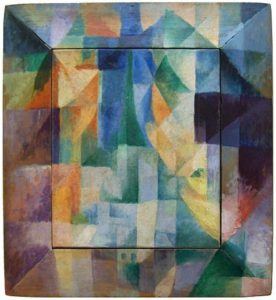
Geometric Abstract Art – The artists would normally use geometrical shapes to make their art, and the art had no hint to or of the real world. This is the purest form of abstract. It is also known as Concrete or Nonobjective art. Cubism, Orphism, Vorticism, Suprematism, De Stijl, and Elementarism fit in this category. Some famous geometric abstract artists include Picasso, Kazimir Malevich, Piet Mondrian, Josef Albers and Victor Vasarely.
Emotional or Intuitional Abstract Art – The artists would provoke nature in non-authentic ways, and they would use a mixture of styles. Organic Abstraction and Surrealism would fall under this category. Two famous abstract artists that practice emotional/intuitional abstract art are Mark Rothko and Salvador Dali.
Gestural Abstract Art – Artists would make the process of making the art more important than the art itself. Gestural artists would use unusual ways to apply their paint, such as loose and rapid brushwork. Some famous gestural abstract artists are Willem de Kooning and Asger Jorn.
Minimalist Abstract – This is a form of post-modern abstract art, that normally uses geometric forms and a ‘what you see, is what you get’ attitude. Some famous minimalist abstract artists include Ad Reinhardt and Frank Stella.
Artists
There are many famous abstract artists, since abstract art covers a wide variety of art forms. These artists are a few of the more famous ones.
J. M. W. Turner (April 23, 1775 – December 19, 1851) was a child prodigy, who was considered an artistic genius. He was an English water
colorist, who was known for his controversial and eccentric life. Turner was known for his use of color scheme, fanciful landscapes, and
unsettling, brutal marine paintings. Some of Turner’s famous paintings were ‘Snow Storm: Steam-Boat off a Harbour’s Mouth,’ ‘Rain, Steam and
Speed- The Great Western Railway’ and ‘Whalers.’
William Morris (March 24, 1834 – October 3, 1896) was a British textile designer, artist, novelist, and socialist activist. Morris helped to impact the Arts and Craft Movement. He was an enlightened figure of Victoria Britain, became a household name, and helped to create Morris, Marshall, Faulkner, and Co. The company produced tapestries, wallpaper, fabrics, and stain glass windows.
Arthur Mackmurdo (December 12, 1851 – March 15, 1942) was an English inventor, architect, and artist. He was a co-founder of the Century Guild of Artists and worked in metalworking and cabinet making. He used motifs in his architecture designs. His favorite was foliage that was tangled into winding curves, which was used in the music room of the Health Exhibition in London. His famous motif was used on columns that were used on houses. The columns were narrow and topped with horizontal quadratic.
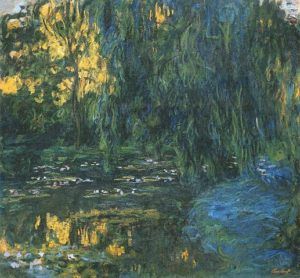
Claude Monet (November 14, 1840 – December 5, 1926) was a French painter, who helped create the French Impressionism. He painted what his viewpoint was over what was found in nature. He was known for repainting his paintings numerous times, to show how the light and the seasons affected the scene. In his later life, he developed cataracts, that Monet underwent surgery for. After the surgery, Monet was able to see ultraviolet rays, that normally people don’t see; this affected the way he recognized colors. Some of Monet’s famous paintings were ‘The Japanese Footbridge,’ the series ‘Weeping Willow,’ and ‘Water-Lilies.’
Henri Matisse (December 31, 1869 – November 3, 1954) was a French drawer, printer, and sculptor; but, was best known as a painter. He was a co-founder of Fauvism and made momentous developments in painting and sculpting. Matisse was known for his passionate color expression, flattened form, and ornamental patterns. After he was diagnosed and underwent surgery for abdominal cancer, he started to create decoupage (or paper collages). Three of Matisse’s famous paintings are ‘La Glace Sans Tain’ (The Blue Window), ‘The Yellow Curtain,’ and ‘L’Atelier Rouge’ (The Red Studio).
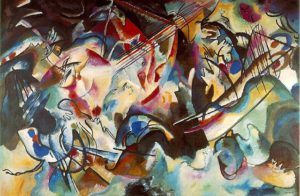
Wassily Kandinsky (December 16, 1866 – December 13, 1944) was a Russian painter and art theorist, who viewed art as a type of spirituality. Kandinsky believed that he could hear the colors as he painted; that each color had a corresponding tone or chord. He helped to found the Museum of the Culture of Painting, and wrote ‘The Blue Rider Almanac.’ Some of Kandinsky’s famous paintings were ‘The Cow’ and ‘Squares with Concentric Circles.’
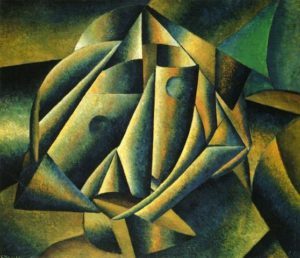
Kazimir Malevich (February 23, 1879 – May 15, 1935) was a Russian art theorist and artist. He laid the foundation for Suprematism, with his geometric forms and showing a correlation between each geometric shape. Much of Malevich’s early work, had an underline tone that dealt with the pandemonium years leading up to the October Revolution. A few of Malevich’s famous works are ‘Black Square,’ ‘Winter Landscape’ and ‘Head of a Peasant Girl.’
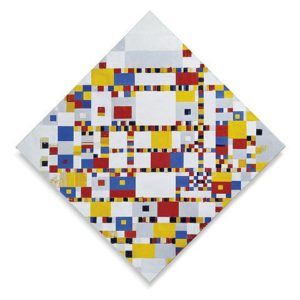
Piet Mondrian (March 7, 1872 – February 1, 1944) was a Dutchman, who helped to co-found De Stijl and Neoplasticism. He was considered a pioneer in abstract art, who used three basic colors and values, and two primary directions. Two of Mondrian’s famous works were ‘Schilderij No. 1’ and ‘Victory Boogie-Woogie.’
Josef Albers (March 19, 1888 – March 25, 1976) was a German-born artist and educator. He was also a printmaker and stain glass artist. He emigrated to the United States in 1933, where he taught art at Black Mountain College and then later on at Yale University. Albers believed that an internal and deceptive logic governed color. One of his famous murals, called ‘Two Portals,’ was created for the entrance of the Time & Life Building lobby, where on the ceiling he took brown and white glass bands and rotated them back and forth, then added two bronze centers to give the mural a depth illusion. One of his most famous paintings, ‘Homage to the Square,’ showed vibrant interactions in squares. Instead of using a brush to create his oil color painting, he used a palette knife.
Victor Vasarely (April 9, 1906 – March 15, 1997) was a Hungarian artist that many consider being the ‘grandfather’ of Op Art. Vasarely experimented with different types of material; however, his projects were still geometric, that used a minimal amount of forms and colors. He experimented with textural, perspectives, shadows and light; during this time, he created ‘The Chess-Board,’ ‘Zebras’ and ‘Girl-power.’ Vasarely also experimented in Cubism, Futurism, Expressionism, Surrealism, and Symbolism, before he found his niche in Op Art, kinematic images and unites plastiques. Some of his other famous works were ‘Gordes/Cristal,’ ‘Self-Portrait in a Broken Mirror’ and ‘The Blind Man.’
Pablo Picasso (October 25, 1881 – April 8, 1973) a Spanish renaissance man; a man who had his hands in many different things. He was a painter, sculptor and ceramicist to name a few. Picasso invented constructed sculpture and was a co-founder of Cubism. His works are categorized into different periods; Blue, Rose, African-inspired, Analytic Cubism and Synthetic Cubism. Some of his most famous works were proto-Cubist ‘Les Demoiselles d’Avignon,’ ‘Still Life with a Bottle of Rum,’ and ‘The Poet.’
Mark Rothko (September 25, 1903 – February 25, 1970) was of Russian-Jewish descent; he emigrated to the United States in 1913. Rothko believed that art was a way to express one’s emotional and religious standpoint. His avant-garde teacher, Max Weber heavily influenced his early work. Rothko then started to find influence in mythological creatures. Two major events helped in the transformation of Rothko’s work, World War II and reading Friedrich Nietzsche. Some of Rothko’s famous works were ‘Gethsemane,’ ‘Rites of Lilith,’ ‘Subway Scene’ and ‘Green on Orange.’
Salvador Dali (May 11, 1904 – January 23, 1989) was a Spanish surrealist and was known for his extraordinary, strange images. He was influenced by many styles of art and experimented in Cubism and Dadaism, before finding his place in Surrealism. His most famous work was ‘The Persistence of Memory,’ while other famous works of Dali’s were ‘Crucifixion (Corpus Hypercubus),’ or ‘Lobster Telephone.’
Willem de Kooning (April 24, 1904 – March 19, 1997) was a Dutch artist, who emigrated to the United States and became a citizen in 1962. He had quit school while living in the Netherlands and became an apprentice in a business for commercial artists. de Kooning then started painting in his free time. In 1928, de Kooning joined an art colony at Woodstock, New York. Then in 1934, he joined the Artist Union. de Kooning then became employed for the Works Progress Administration in the Federal Art Project. In 1939 de Kooning was commissioned to work on the mural ‘Medicine’ for the ‘Hall of Pharmacy.’ During the 1940s, de Kooning’s work became black and white abstract. His most famous work was the ‘Women’ Series, and the most famous painting of the series was ‘Woman VI.’ Some of de Kooning’s other famous works were ‘Interchange,’ ‘Police Gazette,’ ‘Man,’ and ‘Two Standing Men.’
Asger Jorn (March 3, 1914 – May 1, 1973) was a Danish artist. He was a co-founder of COBRA, a European art movement, and Situationist International. His most famous work was ‘Stalingrad’; however, Jorn had many other works, that are housed at Museum Jorn in Denmark. Jorn was not only a painter but also a sculptor, ceramic artist, and author.
Ad Reinhardt (December 24, 1913 – August 30, 1967) was an American abstract artist, educator, and author. His earliest work was deprived of images and was mainly geometrical shapes, while Reinhardt’s later work showed the same color, but every shade of that color. Reinhardt was known for his black paintings, which when they were first looked at looked like it was just a canvas painted black; however, under closer inspection, the canvas was painted black and the shades were very close to black. Reinhardt also drew satire cartoons to promote abstract art.
Frank Stella (May 12, 1936 – present) is an American painter and sculptor, who is well known for his work having no underlying illusions, metaphysical and psychological references, and that he used pictures as objects. Many of Stella’s early work followed the brush stroke and used common house paint. ‘The Black Paintings,’ used black paint that was separated by pinstripes of unpainted canvas. Another example of this technique is ‘Die Fahne Hoch!’. Stella moved away from black paint and started using aluminum and copper colors in the same way he used the black paint on shaped canvas. ‘Irregular Polygons’ is an example of this.
Stella eventually started using a wider range of colors, with straight and curved lines, which is shown in the ‘Protractor’ Series. In the 1990s, Stella started to move towards three-dimensional art, by using the aids of metal cutter and digital technologies, ‘La scienza della pigrizia’ (The Science of Laziness) is an example of this. He also started to create architectural projects and free-standing sculptures.
Conclusion
Abstract art is a wide category of art, especially, since there is no clear definition of it. Each form of abstract art fits under six main broad categories, and has a history that shows abstract art was ever-changing. These are a few of the famous abstract artists; however, there are many others.